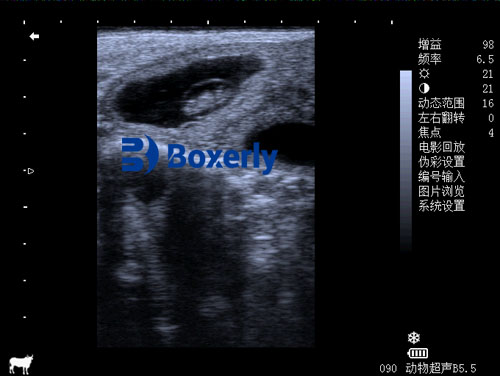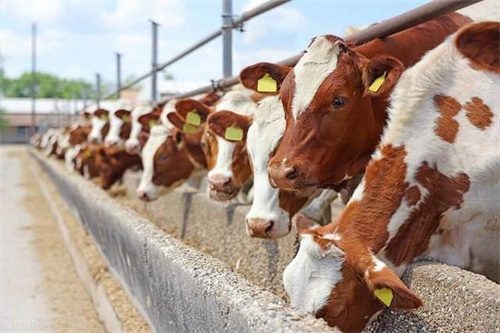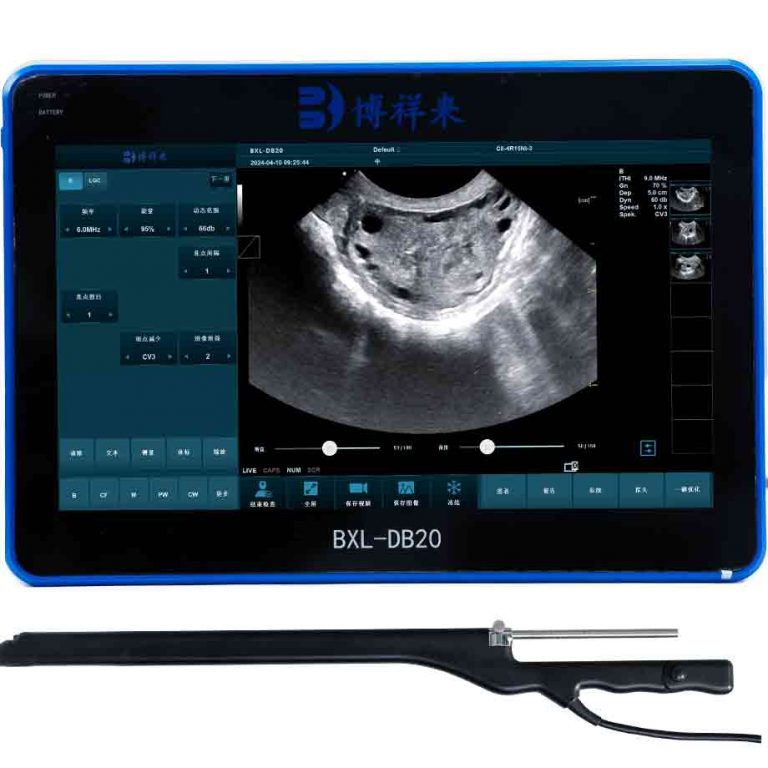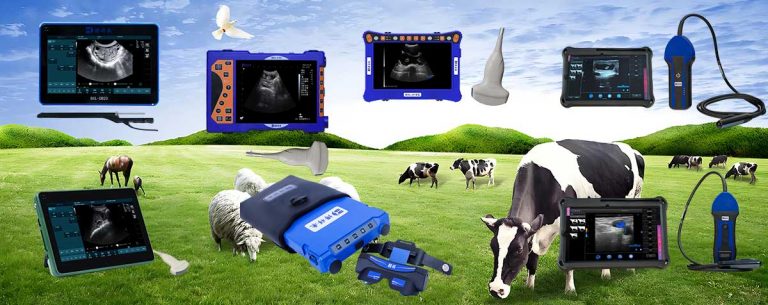Reliability of Ultrasound Pregnancy Tools in Multiparous Dairy Cows
As a dairy farmer, one of the most critical factors determining long-term herd profitability is reproductive efficiency. Ensuring that cows conceive promptly after calving directly influences milk production, calving intervals, and overall herd productivity. Among the many tools available for managing reproduction, ultrasound technology has emerged as one of the most reliable, non-invasive, and practical methods for pregnancy diagnosis, particularly in multiparous dairy cows. In this article, I will explore how ultrasound is used to assess pregnancy in multiparous cows, its reliability compared to other methods, and why it has become indispensable on modern dairy farms worldwide.

Understanding the Reproductive Challenges of Multiparous Dairy Cows
Multiparous cows — those that have calved more than once — often present unique reproductive management challenges. Compared to first-calf heifers, multiparous cows have a history of previous pregnancies, lactation cycles, and uterine involution processes, all of which can influence subsequent fertility. Factors such as postpartum uterine health, metabolic stress, and milk production demands contribute to variations in the ability of multiparous cows to conceive and maintain pregnancy.
Given these complexities, timely and accurate pregnancy detection is essential for making management decisions such as:
-
Identifying open cows for rebreeding
-
Culling decisions
-
Adjusting feeding programs
-
Planning calving schedules
Early pregnancy diagnosis helps minimize the economic losses associated with extended days open, which can amount to significant costs per cow per day for the dairy enterprise.
Traditional Pregnancy Diagnosis Methods
Before the widespread adoption of ultrasound, veterinarians primarily relied on rectal palpation to diagnose pregnancy in dairy cows. While rectal palpation is cost-effective and can provide information about the uterine tone, size, and contents, it has certain limitations:
-
Lower sensitivity in early pregnancy (especially before 35 days post-insemination)
-
Operator-dependent accuracy, requiring substantial skill and experience
-
Inability to detect specific abnormalities such as embryonic viability or twin pregnancies at early stages
Blood-based pregnancy tests have also gained popularity, measuring pregnancy-associated glycoproteins (PAGs). These are non-invasive and highly sensitive after day 28 but do not provide information about embryo viability or uterine health.
In contrast, ultrasound offers a much broader range of diagnostic capabilities, making it especially valuable for multiparous cows.

How Ultrasound Pregnancy Diagnosis Works
Ultrasound technology used for pregnancy diagnosis in dairy cows typically employs B-mode (brightness mode) imaging. A transrectal linear probe is inserted into the rectum, allowing the veterinarian to visualize the reproductive tract in real-time. Modern portable ultrasound devices, like the BXL-V50, provide high-resolution images that enable veterinarians to assess the uterus, ovaries, and developing embryo with remarkable clarity.
The typical steps include:
-
Uterine evaluation: Checking for fluid-filled uterine horns suggestive of pregnancy.
-
Embryo identification: Visualizing the developing embryo or fetus.
-
Heartbeat detection: Confirming embryonic viability as early as 28-30 days post-insemination.
-
Assessing twins: Identifying multiple embryos if present.
-
Detecting abnormalities: Observing signs of early embryonic loss, infections, or uterine pathology.
By providing real-time, visual confirmation, ultrasound allows for a far more comprehensive evaluation compared to palpation or blood tests alone.
Reliability of Ultrasound in Multiparous Cows: What the Research Says
Multiple studies across the globe have validated the high reliability of ultrasound pregnancy tools in dairy cows, including multiparous animals:
-
High Sensitivity and Specificity: A meta-analysis by Fricke et al. (2020) demonstrated that ultrasound achieved over 95% sensitivity and specificity for pregnancies diagnosed between 28-35 days post-insemination.
-
Early Detection: Ultrasound enables detection earlier than rectal palpation, allowing open cows to be identified sooner for rebreeding.
-
Viability Assessment: The ability to observe the embryo’s heartbeat allows differentiation between viable and non-viable pregnancies, which is not possible with blood tests or palpation.
-
Twin Pregnancy Diagnosis: Multiparous cows have a higher incidence of twinning. Ultrasound can reliably detect twin pregnancies early, allowing farmers to adjust management accordingly to reduce complications during calving.
These advantages make ultrasound particularly reliable for monitoring pregnancies in cows with prior reproductive histories, where uterine scarring, adhesions, or past complications might obscure the accuracy of palpation-based assessments.

Field Experience: What Farmers and Veterinarians Are Saying
In countries with advanced dairy industries such as the United States, Canada, New Zealand, and parts of Europe, ultrasound has become a routine component of reproductive management programs. On my own farm, we adopted ultrasound technology nearly a decade ago, and it has profoundly changed how we manage multiparous cows.
Early and Accurate Pregnancy Detection
With portable ultrasound scanners, we can confirm pregnancies as early as 28 days post-breeding. This shortens the open period and allows us to schedule prompt re-insemination for non-pregnant cows. Especially in high-yielding multiparous cows, where fertility rates may already be challenged by metabolic stress, every lost day counts.
Confidence in Viability Assessment
Before using ultrasound, we sometimes mistakenly assumed cows were pregnant based on uterine size or tone, only to discover later embryonic loss had occurred. With ultrasound, we visually confirm embryo heartbeat, giving us confidence in the pregnancy status and reducing false positives.
Managing Twin Pregnancies
Multiparous cows are statistically more likely to conceive twins, which can increase the risk of dystocia, retained placenta, and metabolic disorders. Early identification of twins via ultrasound allows us to adjust nutrition, monitor more closely, and prepare veterinary assistance at calving if needed.
Identifying Uterine and Ovarian Pathologies
In some older multiparous cows, we occasionally encounter cystic ovaries or uterine infections that could compromise fertility. Ultrasound enables real-time detection of these issues, allowing for immediate intervention and treatment.

Limitations and Considerations
While ultrasound is highly reliable, it is important to acknowledge its limitations:
-
Operator skill: Ultrasound accuracy depends on the training and experience of the operator. Inexperienced users may misinterpret images.
-
Equipment quality: Low-quality or outdated equipment may provide poor image resolution, limiting diagnostic value. Devices like the BXL-V50, with its high-definition screen and long battery life, are designed specifically for field use and improve reliability.
-
Cost considerations: Initial equipment investment may be higher compared to palpation, though costs are quickly recovered through improved reproductive efficiency.
-
False positives in early resorption: Some pregnancies may fail after detection; thus, follow-up scans may be necessary to confirm continued pregnancy viability.
Ultrasound in the Broader Context of Reproductive Management
It is important to emphasize that ultrasound is not a standalone solution but rather part of a comprehensive reproductive management strategy. Successful dairy reproduction programs often integrate:
-
Timed Artificial Insemination (TAI) protocols
-
Metabolic and nutritional support during transition periods
-
Genetic selection for fertility traits
In this integrated system, ultrasound provides timely, accurate information that supports better decision-making at every stage.
Global Adoption Trends: Why Ultrasound Use Is Growing
International surveys and veterinary association reports confirm that ultrasound is now standard practice in many high-producing dairy herds globally. Some of the driving factors behind this adoption include:
-
Consumer demands for animal welfare: Non-invasive diagnostics like ultrasound minimize animal stress.
-
Data-driven herd management: Large dairy operations rely on precise, real-time data to optimize performance.
-
Advances in portable ultrasound technology: Lightweight, rugged devices such as the BXL-V50 make it easier than ever to bring high-quality imaging directly to the barn.
In developing dairy markets, increasing awareness of ultrasound’s benefits is also driving growth, especially as veterinary service providers gain training and access to affordable portable equipment.
Conclusion
For today’s dairy producer, especially those managing multiparous cows, ultrasound has revolutionized pregnancy detection and reproductive monitoring. Its ability to deliver early, accurate, and comprehensive information about pregnancy status, fetal viability, twin detection, and uterine health makes it far more reliable than traditional palpation or single-factor blood tests.
By adopting ultrasound technology, we reduce the risks associated with reproductive delays, improve herd management, and ultimately enhance farm profitability while promoting animal welfare. On my farm—and increasingly on farms worldwide—ultrasound pregnancy tools have become indispensable for managing the complex reproductive needs of multiparous dairy cows.
References
-
Fricke, P.M., Giordano, J.O., et al. (2020). “Reproductive Ultrasonography in Dairy Practice.” Journal of Dairy Science, 103(4), 3727-3741. https://doi.org/10.3168/jds.2019-17281
-
Romano, J.E., et al. (2018). “Accuracy of Transrectal Ultrasonography for Early Pregnancy Diagnosis in Dairy Cattle.” Theriogenology, 111, 1-7. https://doi.org/10.1016/j.theriogenology.2018.01.012
-
LeBlanc, S.J. (2020). “Management of Reproduction in Dairy Cows.” Veterinary Clinics of North America: Food Animal Practice, 36(2), 283-296. https://doi.org/10.1016/j.cvfa.2020.02.002
-
DairyNZ (2023). “Pregnancy Testing with Ultrasound.” https://www.dairynz.co.nz/animal/reproduction/pregnancy-testing/




